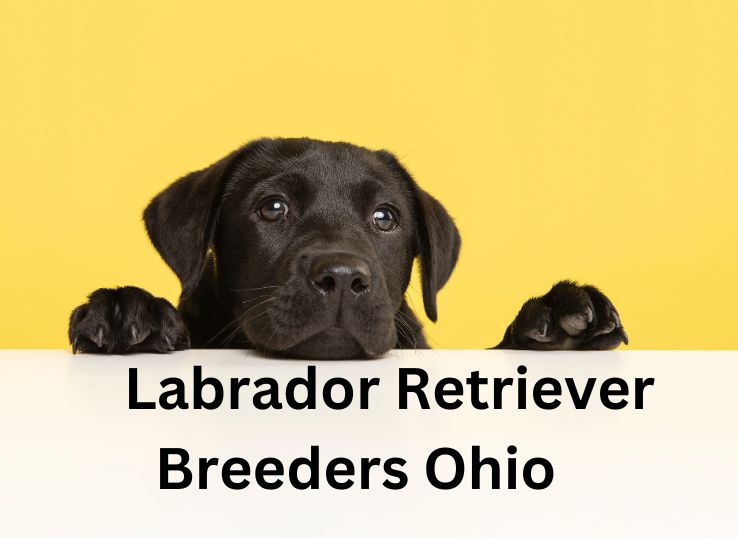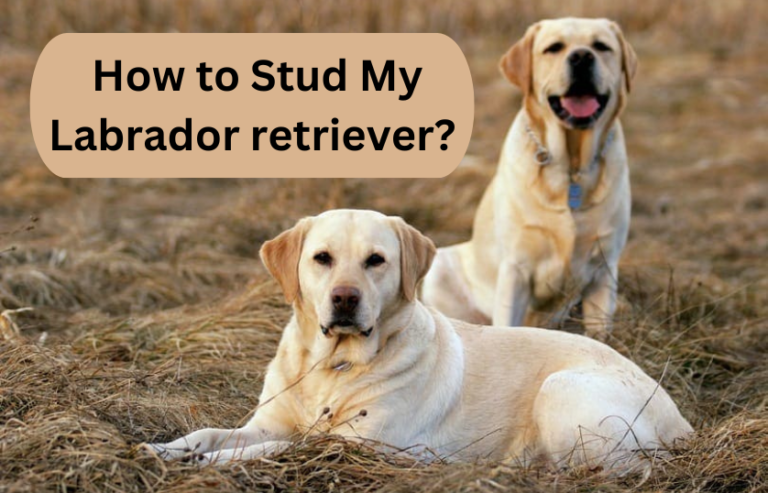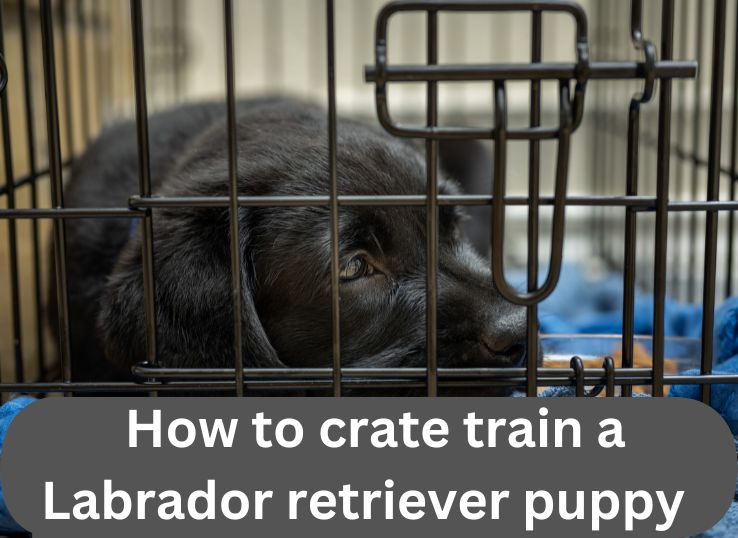How Much to Feed a Labrador retriever Puppy: A Comprehensive Guide
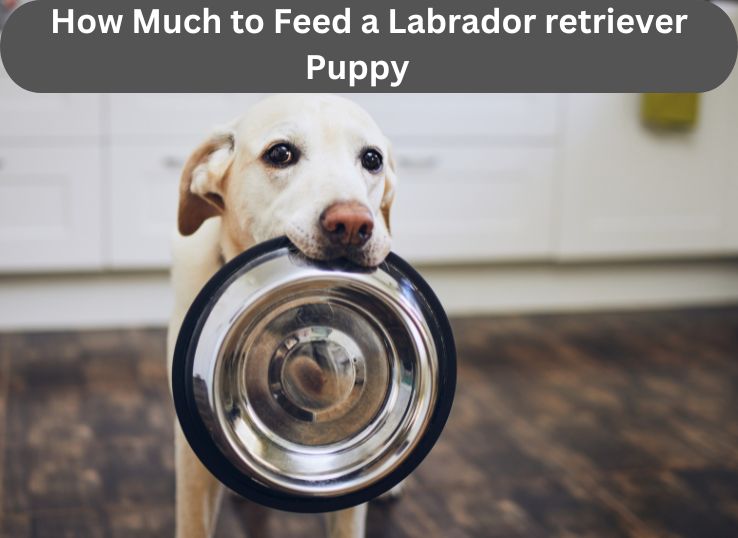
As pet owners, we understand the importance of providing our furry friends with the right nutrition. This is especially crucial when it comes to feeding puppies, as their dietary needs are different from those of adult dogs. In this article, we will focus on the dietary needs of Labrador Retriever puppies, answering the question: how much to feed a Labrador Retriever puppy?
Table of Contents
Understanding Your Labrador Retriever Puppy’s Dietary Needs
Labrador Retrievers are known for their playful and energetic nature. As puppies, they experience rapid growth and development, which requires a diet rich in protein, fat, and carbohydrates.
The type of food you choose for your puppy, whether it’s kibble, raw food, wet canned meals, or homemade diets, can have different benefits. However, the most important factor is portion control.
Labrador puppies have smaller stomachs and need to eat regular small nutritious meals. It’s recommended to feed your Lab puppy four times a day, evenly spread out over daytime hours. As your puppy grows, you can adjust the feeding schedule and portion sizes accordingly.
How Much to Feed a Labrador retriever Puppy: Feeding Guide for Your Labrador Retriever Puppy
Here’s a general feeding guide for your Labrador Retriever puppy based on their age and weight.
| Age of Puppy | Weight of Puppy | Quantity Per Day | Meals Per Day | Quantity Per Meal |
| 2-4 months | 15-18 lbs (7-8 kilos) | 7/8 – 1 1/8 cups (200-250 grams) | 4 | 1/4 cup (50-55 grams) |
| 4-6 months | 24-26 lbs (11-12 kilos) | 1 1/8 – 1 3/8 cups (250-300 grams) | 3 | 3/8 – 5/8 cup (80-100 grams) |
| 6-12 months | 50-60 lbs (23-27 kilos) | 1 1/2 – 2 cups (350-450 grams) | 2 | 3/4 – 1 cup (175-225 grams) |
Please note that this is a general guide and the exact quantity of food your puppy needs may vary depending on their activity level, metabolism, and the type of food you’re feeding them. Always consult with your vet or a pet nutrition expert to determine the best diet for your puppy.
Choosing the Right Food for Your Labrador retriever Puppy
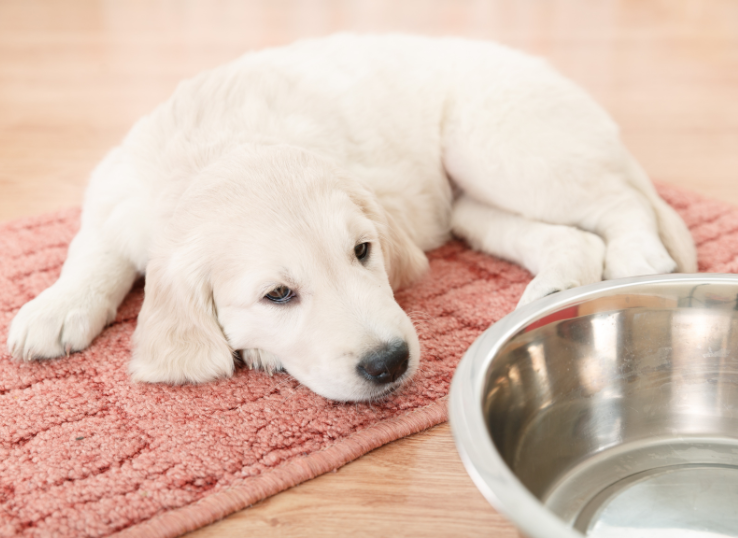
When choosing food for your Labrador Retriever puppy, it’s important to select a brand that provides all the necessary nutrients and keeps your puppy healthy without breaking the bank. Labrador puppy food should be aimed at medium to large breed dogs.
Many people believe kibble is the best way to feed a puppy, as it’s easy to buy, store, and feed, and contains every nutrient a puppy needs in the right proportions.
However, some pet owners prefer a home-made raw-food diet. If you choose this route, you’ll need to do a lot of research to ensure your puppy gets exactly what they need in the right amounts.
Different Types of Puppy Food
There are several types of puppy food available in the market, each catering to the specific needs and preferences of puppies and their owners. Here are some common types of puppy food:
- Dry kibble: This is the most popular type of puppy food, as it’s easy to store, has a long shelf life, and is generally more affordable than other options. Kibble is made by combining various ingredients, including proteins, carbohydrates, fats, vitamins, and minerals, and then baking or extruding them into small, dry pieces.
- Wet or canned food: Wet puppy food is typically made with higher moisture content and can be more palatable for some puppies due to its texture and aroma. It often contains more protein and fat than dry kibble, making it a good option for puppies with specific dietary needs.
- Semi-moist food: This type of puppy food has a higher moisture content than dry kibble but is not as wet as canned food. It usually comes in small, soft pieces that are easy for puppies to chew and digest.
- Home-cooked food: Some pet owners prefer to prepare their puppy’s food at home using fresh ingredients like meat, vegetables, and grains. This allows for greater control over the quality and variety of ingredients, but it requires more time and effort to ensure a balanced and complete diet.
- Raw food diet: Also known as the BARF (Biologically Appropriate Raw Food) diet, this type of puppy food consists of raw meat, bones, vegetables, and fruits. Proponents of raw feeding argue that it provides a more natural and healthier diet for puppies, but it requires careful planning and preparation to ensure a balanced and safe diet.
When choosing the right type of food for your puppy, it’s essential to consider factors such as their breed, size, age, and any specific dietary needs or preferences. Always consult with your veterinarian to determine the best diet for your puppy.
Transitioning Your Labrador Retriever Puppy to Adult Food

As a Labrador Retriever puppy grows, its dietary needs change. Transitioning from puppy food to adult food is a crucial step in your pet’s life. This process should be done gradually and at the right time to ensure your pet’s health and well-being. In this article, we will guide you on how to transition your Labrador Retriever puppy to adult food.
When to Transition
The timing of the transition from puppy food to adult food depends on several factors, including your puppy’s breed, size, and whether they have been spayed or neutered. Labrador Retrievers, being a large breed, typically switch to adult food between 12 and 18 months of age.
However, it’s essential to consult with your vet to determine the best time to make the switch based on your puppy’s specific needs.
How to Transition
When it’s time to switch your puppy to adult food, the transition should be done gradually to avoid digestive issues. Start by mixing a small amount of adult food with your puppy’s current food. Over the course of a week or so, gradually increase the proportion of adult food while decreasing the amount of puppy food.
Here’s a general guide:
- Day 1-2: 75% puppy food, 25% adult food
- Day 3-4: 50% puppy food, 50% adult food
- Day 5-6: 25% puppy food, 75% adult food
- Day 7: 100% adult food
Remember, these are general guidelines and individual needs can vary. Always monitor your puppy’s reaction to the new food. If your puppy experiences any digestive issues, such as diarrhea or vomiting, consult with your vet immediately.
Pros and Cons of Different Types of Food
1. Kibble
Pros:
- Easy to buy, store, and feed
- Contains all necessary nutrients in the right proportions
- Makes taking care of a puppy’s diet extremely easy for an owner
Cons:
- Some dogs may not like the taste
- Quality can vary between brands
2. Raw Food
Pros:
- Can be more natural and healthier
- Some dogs prefer the taste
Cons:
- Requires a lot of research and knowledge to ensure a balanced diet
- Can be more time-consuming to prepare
FAQs
Q: How often should I feed my Labrador Retriever puppy?
A: It’s recommended to feed your Lab puppy four times a day when they’re 2-4 months old. As they grow, you can reduce the feeding frequency to three times a day (4-6 months old) and eventually to two times a day (6-12 months old).
Q: Can I feed my Labrador Retriever puppy adult dog food?
A: No, puppies have different nutritional needs compared to adult dogs. It’s important to feed your puppy food specifically designed for puppies.
Conclusion
Feeding your Labrador Retriever puppy the right amount and type of food is crucial for their growth and development. Always consult with your vet or a pet nutrition expert to determine the best diet for your puppy. Remember, portion control is key, and the type of food you choose can have different benefits.


